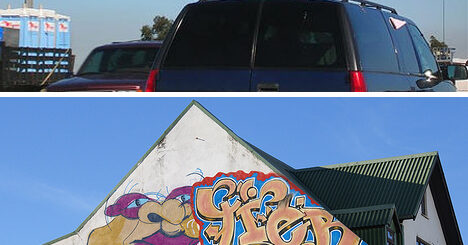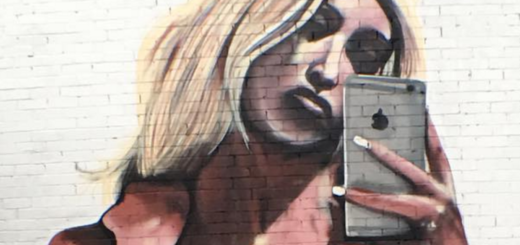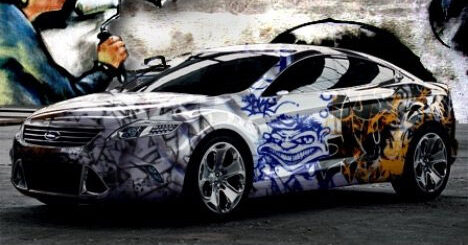Top Graffiti Hotspots: NYC to Tokyo’s Street Art Secrets
Graffiti’s always had a way of capturing the pulse of the streets, turning dull walls into vibrant canvases that tell a thousand stories. It’s an art form that’s constantly evolving, with each tag, mural, and piece highlighting the creativity and messages of urban artists around the world.
From the hidden alleys of New York to the bustling streets of Berlin, I’ve witnessed some of the most stunning graffiti highlights that have not only beautified cities but also sparked conversations. Join me as I dive into the colorful world of street art, showcasing the masterpieces that have left me, and countless others, in awe.
Whether you’re a graffiti aficionado or just curious about the art that adorns urban landscapes, there’s no denying the impact these spray-painted gems have on our culture. Let’s explore the bold, the beautiful, and the downright revolutionary highlights of graffiti art.
The Evolution of Graffiti
Graffiti isn’t just a modern expression; it’s an ancient practice that’s evolved through the centuries. My fascination with this art form deepened when I learned that even ancient civilizations had their own type of graffiti. The scrawls and paintings found in the ruins of Pompeii and ancient Egypt are prime examples of early graffiti. What once was a tool for political expression or simple personal marks has blossomed into a complex, vibrant art form that shouts from city walls.
The 1970s and 1980s were pivotal decades for graffiti. It was during this time that tagging, the act of writing one’s name or alias in a distinctive style, became deeply rooted in the hip hop culture of New York City. Subway trains became mobile canvases, displaying colorful masterpieces for all the city to see.
By the 1990s, graffiti had spread to every corner of the globe. Each region developed its own style, and the messages became more varied and complex. Artists like Banksy and Shepard Fairey pushed the boundaries, using graffiti to engage with social and political issues.
Today, graffiti is no longer just an underground movement. It’s celebrated in galleries, commissioned for businesses, and protected by law in some cities. To grasp this evolution, I’ve tracked the changes in techniques and materials. From spray paint advances to the digital projection of images, the tools have changed dramatically. These innovations have allowed artists to create more intricate and lasting works, making modern graffiti a true testament to the ingenuity of urban artists.
The complexity of subject matter in contemporary graffiti is a testament to its maturity as an art form. No longer solely focused on self-promotion or territorial markings, today’s graffiti artists explore themes of identity, social justice, and community. Their work often prompts dialogue and challenges societal norms, proving that graffiti continues to be a dynamic and engaging means of communication.
Exploring Street Art in New York City

New York City is often hailed as a global mecca for street art. The city’s urban landscape serves as a sprawling canvas for artists to display their ingenuity. From the Bronx to Brooklyn, I’ve seen how every borough boasts its own signature styles and icons, reflecting the dynamic cultural fabric of the metropolis.
Walking through neighborhoods like Bushwick or the Lower East Side, it’s evident that street art is a vital thread in the city’s aesthetic quilt. Here, you’ll find masterpieces ranging from massive murals to subtle stencil work. Icons like Banksy and up-and-coming local artists coexist, turning the streets into an open-air museum.
Graffiti in New York has evolved, and so have the subjects it tackles. Themes of resistance, celebration, and community engagement are recurrent. Notably, the Bowery Mural on Houston Street serves as a prominent platform for contemporary artists. Its ever-changing facade captures the pulse of the city, showcasing work from legends such as Keith Haring and Shepard Fairey.
Diving deeper into the city’s street art scene, let’s talk technique. Gone are the days of purely spray paint and marker tags. Today, New York’s graffiti employs everything from traditional aerosol paints to intricate wheatpaste posters and innovative digital projections. This cross-pollination of techniques not only allows for diverse expression but also pushes artistic boundaries within the urban environment.
It’s fascinating to view the city through the lens of its street art. Each piece tells a story, from commemorating historical events to providing scathing commentary on current socio-political issues. Engaging with street art is, in a way, engaging with the heart of New York City. Through its vivid visuals and thought-provoking content, graffiti continues to be an essential voice within the bustling cityscape. Witnessing the city’s walls converse with residents and visitors alike is a testament to the enduring relevance and transformative power of street art.
Vibrant Murals in Berlin’s Streets

Berlin’s urban canvas is nothing short of mesmerizing. Stepping into the streets of this bustling city, I’m always struck by the arresting murals that adorn the walls of Kreuzberg and Friedrichshain, capturing the dynamic pulse of these neighborhoods. Street art in Berlin is more than decoration; it’s a historical record and conversation with the public, evolving from the city’s tumultuous past into a vibrant celebration of its present.
The East Side Gallery, a long-standing symbol of freedom and reunification, hosts one of the longest-standing open-air galleries in the world. Once a section of the Berlin Wall, it’s now covered in over 100 murals by artists from across the globe, telling a story of hope and defiance that resonates with everyone who walks its length. This poignant stretch of creativity anchors Berlin’s reputation as an epicenter of street art.
Farther afield, iconic works by artists like Blu and Os Gemeos turn entire building facades into breathtaking masterpieces. The larger-than-life cosmonaut, famously painted by Victor Ash, is a quintessential representation of Berlin’s street art — audacious and impossible to overlook. Each of these works contributes to a broader narrative, one that’s woven with threads of political satire, social commentary, and a touch of whimsy.
Street art tours have become a staple for locals and visitors alike, eager to dive deep into the stories behind murals like the “Astronaut Cosmonaut” or the “Yellow Man” by Os Gemeos. I’ve joined a few of these tours and can attest to their enlightening nature, as they peel back layers of history to reveal the city’s heartbeat.
In a city that never sleeps, street art serves as a mirror reflecting Berlin’s complex identity. Engaging in a visual dialogue with the people, these murals continuously transform urban spaces into cultural landmarks. They are snapshots of a moment, the spirit of Berlin captured in vibrant colors and bold lines, emphasizing that in this city, every wall is a potential canvas for artistic expression.
Hidden Gems: Graffiti in Unexpected Places

Discovering street art in unexpected locations can be as exhilarating as finding hidden treasure. I’ve roamed various corners of the globe and come across some of the most stunning and under-the-radar graffiti spots. These places aren’t just canvases; they’re stories waiting to be uncovered.
In Ljubljana, Slovenia, the Metelkova City area, a former military barracks turned autonomous cultural center, bursts with vibrant graffiti that covers nearly every inch of the space. Its existence is a testament to the power of creative resistance and community.
While Tokyo is renowned for its cutting-edge technology and pristine streets, it also harbors the lesser-known district of Shimokitazawa, a hotspot for graffiti enthusiasts. This locale is a jumble of narrow lanes lined with an eclectic mix of spray-painted murals and stickers that blend urban culture with the area’s bohemian vibe.
Let’s not overlook Valparaíso, Chile. This port city is a kaleidoscope of color, with its steep hills adorned with some of the most intricate and sophisticated street art in the world. Artists here have enhanced Valparaíso’s historic architecture, creating a dynamic contrast that’s as compelling as it is picturesque.
I’ve gathered a few fascinating statistics about the prevalence of hidden graffiti spots:
| City | Number of Known Hidden Graffiti Sites | Yearly Visitors (est.) |
|---|---|---|
| Ljubljana | 50+ | 10,000+ |
| Tokyo | 30+ | 5,000+ |
| Valparaíso | 75+ | 20,000+ |
These hidden graffiti gems also serve as vital signposts of countercultural movements, giving voice to the marginalized and acting as landmarks of alternative narratives within urban landscapes. Whether through alleyways or on the sides of neglected buildings, these artworks reflect the diversity and the silent dialogues that are constantly shaping our societies—pushing boundaries and challenging the status quo.
Street art, in these hidden corners of the world, isn’t just decoration; it’s a dialogue with the city and its inhabitants. It’s an ever-evolving exhibition that I’ve been privileged to witness, proving that sometimes the most profound art is tucked away waiting for those willing to look a little closer.
The Messages Behind the Tags

At its core, graffiti is a form of communication; a colorful and often controversial dialogue painted on the urban canvas. It’s where artists voice their thoughts, political opinions, or even just their name in an assertive yet transient medium. As I delve into the coded symbols and unique tags found across various cities, it’s evident that each piece tells a multifaceted story about its creator and the context in which it resides. Every tag is more than just paint; it’s a statement.
In New York City, for example, tags can signify everything from gang territory to memorials for lost loved ones. The fluid lettering and vibrant backdrops often contain subtle nods to influential events or local concerns. Similarly, in Berlin, graffiti often reflects sociopolitical statements, embodying the city’s history and its residents’ resilience. Artists like Banksy have turned tagging into an art form that’s both biting and whimsical, prompting observers to question their surroundings and preconceived notions.
Diving into the deeper meanings of graffiti, I find that the tags are imbued with a range of emotions and messages:
- Resistance and protest against social injustices
- A desire for recognition among peers and within the art world
- Tributes to cultural icons or fallen friends
- A touch of humor in the midst of a bustling city life
- A call for change or a reflection of the zeitgeist
The language of graffiti is as diverse as its creators. The variations in style, technique, and placement all contribute to the narrative that unfolds on city walls. From Ljubljana’s hidden alleyways to Tokyo’s vibrant districts, each tag carries a piece of individual identity and serves as a thumbprint of the urban environment.
Understanding these messages requires more than just a passing glance; it demands cultural sensitivity and a willingness to engage with the community’s lived experiences. Observing the dialogue between the wall and the world reveals the pulse of the city, one spray can at a time.
Conclusion
Graffiti art stands as a testament to the vibrant pulse of urban life, reflecting the complexities of society back at us from the walls that line our streets. I’ve journeyed through the colorful boroughs of New York, the historical canvas of Berlin, and the hidden alleys of cities worldwide, where graffiti serves as a powerful form of expression. It’s a language that speaks volumes, where each tag carries a weight far beyond its immediate visual impact. Whether it’s a call to action, a poignant tribute, or a playful jest, the stories etched in spray paint remind us that art isn’t confined to galleries—it thrives in the open, waiting for those who are willing to look, listen, and understand. Let’s keep our eyes open for these urban narratives, for in them lies the unfiltered voice of our cities.



